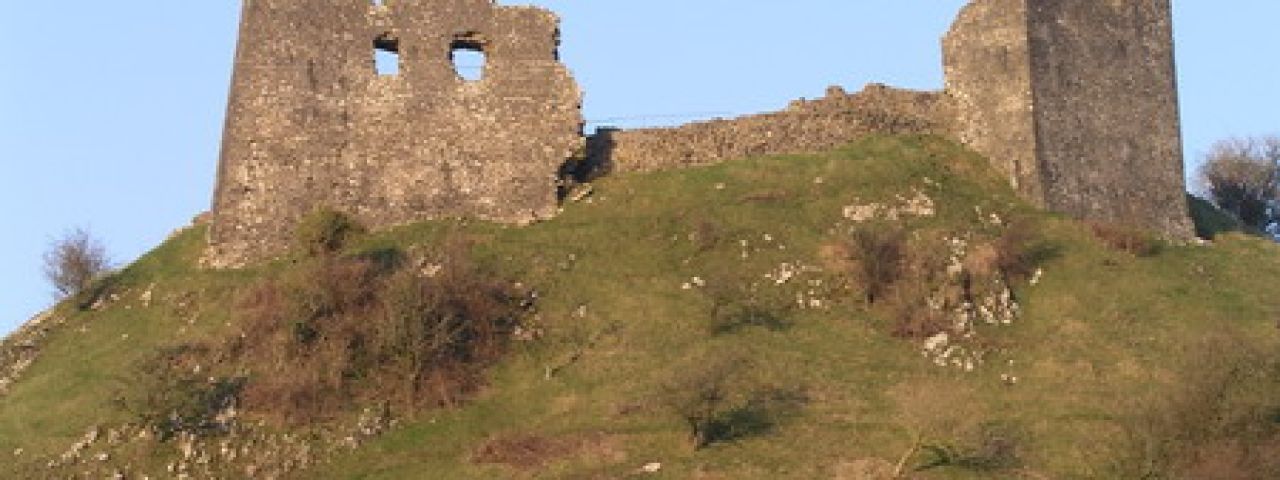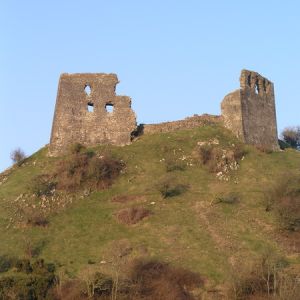Castell Dryslwyn
Sightseeing attraction | Carmarthen | Wales | United Kingdom
Medieval castle ruins in Wales
Castell Dryslwyn - A historical castle ruin with spectacular views
Historical site in South Wales
Castell Dryslwyn, an impressive medieval castle ruin near Carmarthen in Wales, is a fascinating testament to Welsh history. Situated on a prominent hill in the Tywi Valley, the castle offers breathtaking views of the surrounding landscape and tells the exciting story of the Welsh princes who once fought for their independence.
Viewpoint in Tywi Valley
## Historical Background
The origins of Castell Dryslwyn date back to the 12th century. It was likely built by the princes of the Kingdom of Deheubarth, one of the most significant Welsh dominions of the Middle Ages. Its strategic location on a hill above the River Tywi made it an important stronghold in the region.
Visit to Castell Dryslwyn
In the 13th century, the castle flourished under the rule of Llywelyn ap Gruffudd, the last Prince of Wales. It was one of the centers of Welsh resistance against English rule. However, this resistance was not permanent: in 1287, Castell Dryslwyn was besieged and eventually captured during a major campaign by troops of the English King Edward I. The English crown took control and strengthened the fortress, but it gradually lost its significance and was finally abandoned in the 15th century.
Hiking trails around castle ruins
Today, only ruins of the castle remain, but they tell a fascinating story of power struggles, sieges, and the Welsh quest for independence.
## Architecture and Remains
Despite its ruined state, Castell Dryslwyn provides valuable insights into medieval castle construction. The castle once consisted of several fortified areas with defensive structures, residential buildings, and economic facilities.
The remaining remnants include:
- Parts of the castle walls, which still show the extent of their former size.
- The former great tower, which likely served as the lord's residence.
- The ruins of the chapel, indicating that the castle was once a significant religious center.
- The remains of the gatehouse through which visitors may have entered the castle.
The strategic hilltop location gave the castle a natural defense, making it almost impregnable. However, ultimately it could not protect it from the English conquerors.
## Experiences and Activities
Visiting Castell Dryslwyn is a rewarding experience for those interested in history and nature. The castle ruin is freely accessible and invites exploration of the medieval remains.
- Historical exploration: Information panels explain the significance of individual sections of ruins and provide insight into the turbulent history of the castle.
- Viewing platforms: From the hill, there is a spectacular view over the green Tywi Valley, one of the most beautiful landscapes in Wales.
- Walking trails: The surroundings offer scenic hiking trails that lead through the valley and along the river. The ascent to the castle, meandering through the open hills, is particularly beautiful.
- Photography: The ruin and the impressive views offer numerous subjects for photographers, especially at sunrise or sunset.
## Natural Environment and Wildlife
The castle is set in an idyllic landscape typical of South Wales. The Tywi Valley is known for its gentle hills, lush pastures, and the peacefully flowing river winding through the valley.
The area is also an important habitat for wildlife, including red kites, buzzards, and numerous other bird species often circling over the castle ruins. The natural surroundings make Castell Dryslwyn a great place for nature lovers and hikers.
## Significance and Conservation Status
Although Castell Dryslwyn is now a ruin, it remains a significant symbol of Welsh history. It recalls a time when Wales was still independent and its princes fought against the might of England.
The ruin is part of Wales' national heritage and is maintained as a historical site. Despite its ruined state, the site is relatively well-preserved and offers visitors the opportunity to immerse themselves in the medieval past.






















































































































































































